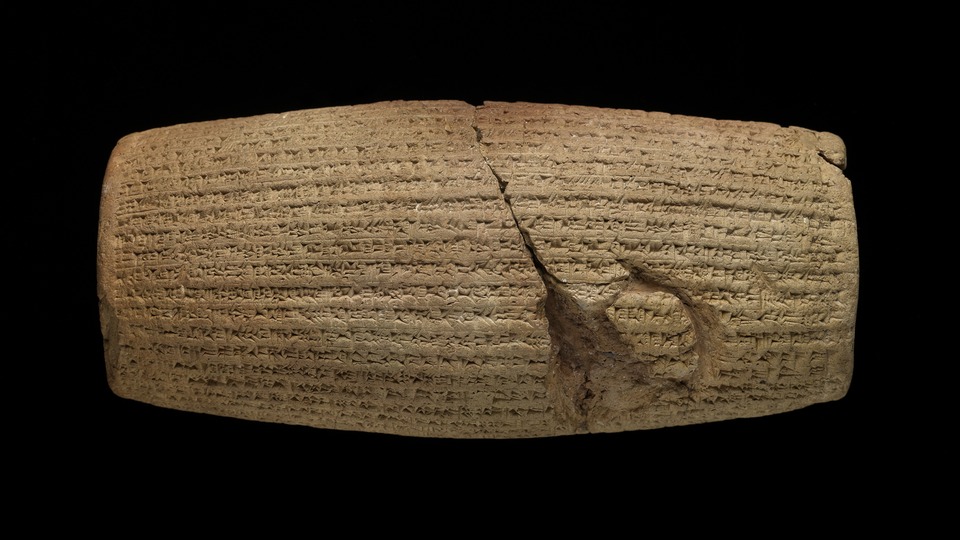The Israel Post Service has issued a new stamp bearing an image of famed the clay cylinder which bears an inscription by King Cyrus of Persia declaring he built a Temple for the Jews.
A new stamp, issued by the Israel Post Service, features the famous clay cylinder bearing the Cyrus Declaration, discovered in the ancient city of Babylon in 1879. A long inscription in Akkadian includes a plea made by King Cyrus of Persia to the Babylonians in which he declared that he had acted on behalf of the Babylonian god Marduk. “I, Cyrus King of Babylonia… Marduk the Great Lord… blessed me… and I built for them a permanent Temple. I gathered all their inhabitants and restored their place of residence.”
The stamp tab features a coin minted in this autonomous province in the mid-4th century BCE, during the Persian rule. The front of the coin is engraved with a lily and the back is adorned with a spread-winged falcon as well as the word “Yehud” in ancient Hebrew letters. The coin is part of the Israel Museum collection.
In the year 586 BCE, King Nebuchadnezzar of Babylonia conquered the city of Jerusalem, destroyed the Temple and sent many of the inhabitants of Judah into exile. The Babylonian Exile ended when the empire was conquered by Cyrus II of Persia and Media, who made a public declaration granting the Jews the right to return to Judah and rebuild the Temple in Jerusalem.
In the year 539 BCE, after uniting the Persian and Median kingdoms under his rule, King Cyrus subdued the Babylonian Empire. He founded the First Persian Empire, ruling over large areas stretching from India in the east to Egypt in the west.
Shortly thereafter, in 538 BCE, King Cyrus made a public declaration, the content of which was preserved in the Book of Ezra:
“In the first year of King Cyrus of Persia… the Lord roused the spirit of King Cyrus of Persia to issue a proclamation throughout his realm by word of mouth and in writing as follows: Thus said King Cyrus of Persia: The Lord God of Heaven has given me all the kingdoms of the earth and has charged me with building Him a house in Jerusalem, which is in Judah. Anyone of you of all His people, may his God be with him, and let him go up to Jerusalem that is in Judah and build the House of the Lord God of Israel, the God that is in Jerusalem” (Ezra, chapter 1).
Many modern biblical researchers were skeptical about the wording of the declaration as described in the Book of Ezra. Among other things, they claimed that it was improbable that a Persian king would have made a declaration in Hebrew or declared that he was acting as a messenger of the God of Israel.
But archeological excavations conducted in the ancient city of Babylon in 1879, discovered a clay cylinder bearing a long inscription in Akkadian. The inscription included a plea made by King Cyrus to the Babylonians in which he declared that he had acted on behalf of the Babylonian god Marduk. “I, Cyrus King of Babylonia… Marduk the Great Lord… blessed me… and I built for them a permanent Temple. I gathered all their inhabitants and restored their place of residence.” This archeological discovery strengthened the view that Cyrus was sympathetic and supportive of all the peoples under his rule and that the Declaration which appeared in the Bible was an accurate reflection of history.
Following the Cyrus Declaration, some of the Babylon Exiles returned to Jerusalem, rebuilt the Temple and founded an autonomous Jewish province called Yehud Medinata.
Click here to purchase the Cyrus Declaration Stamp Sheet (Israel Post).
